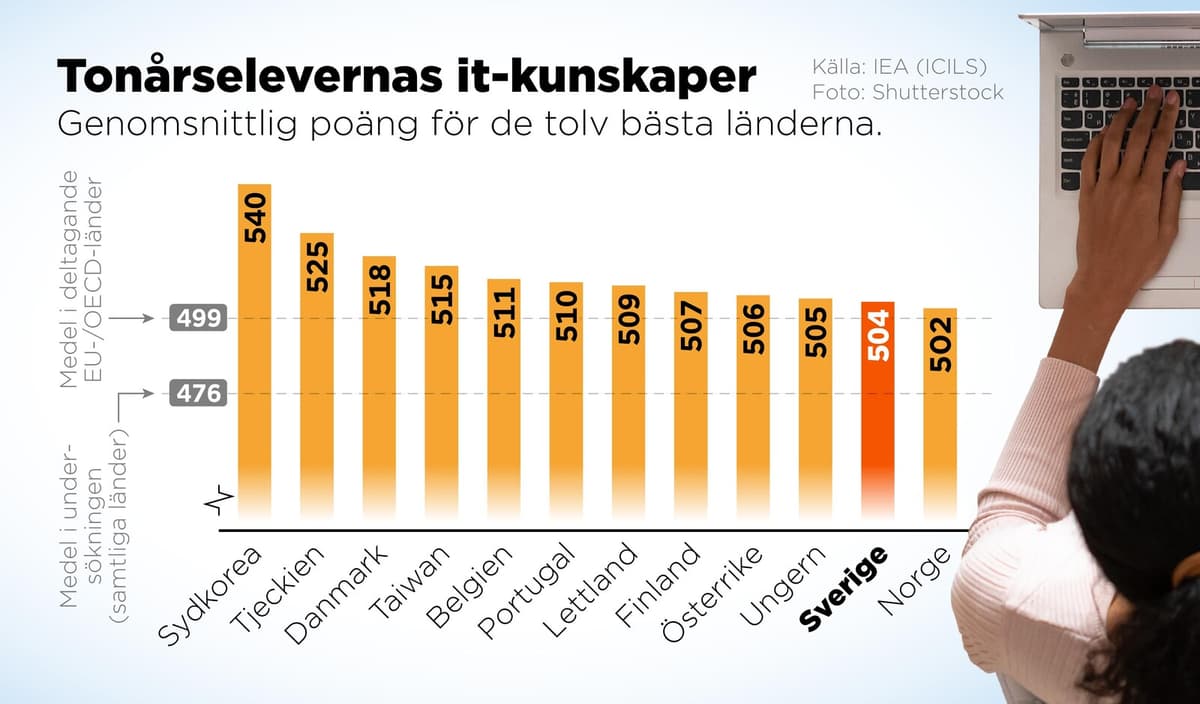Swedish young people use tablets, mobile phones, and computers to a high degree, both in school and during their free time. But until now, it has been unknown what students can actually do with a computer in terms of searching, reviewing, and presenting information.
The results from the international study Icils show that 39 percent of Swedish eighth-graders perform at a low or very low level.
It's serious, because it means that a large proportion of students lack the skills needed to be an active citizen, says Anna Castberg, head of the Swedish National Agency for Education's analysis department.
A roughly equally large group, 41 percent, of eighth-graders have a basic IT skill. The remaining 20 percent can independently solve various tasks.
Frequent users
The result can be seen against the background that Swedish students, along with Danish students, are the ones who use digital tools daily in school to the highest degree. Sweden, Norway, and Denmark also have the highest proportion of students who report having learned to search for information on the internet and being critical of sources in school.
Almost all students say they have received this type of education. Then one can conclude that more needs to be done for all Swedish eighth-graders to be at least at a basic level in digital competence. There is no equal sign between using digital tools extensively and having high competence, says Anna Castberg.
"More to be done"
In a comparison with the other 30-odd participating countries, Sweden is at the average for the participating EU/OECD countries. But Sweden is far behind the leading countries, South Korea, the Czech Republic, and Denmark, in terms of points.
There is a development potential for the Swedish school system. Not least when we can see that other Nordic countries, and especially Denmark, perform better. It may depend on how education is organized, and here there is likely more to be done, says Anna Castberg.
Icils also shows large differences depending on background. Students from well-educated homes have significantly better results than students from socio-economically weaker homes. Furthermore, Icils shows that the type of school has an impact. A school where students come from privileged homes lays the foundation for a significantly better result than a school with a low socio-economic student composition.
Icils (International Computer and Information Literacy Study) examines eighth-graders' digital competence.
The responsible organization for the study is the international research organization IEA.
The study was conducted in 2013, 2018, and 2023.
Over 30 countries participated in Icils 2023. Sweden participated for the first time.
In Sweden, 3,400 students participated, most of whom were born in 2008.
The Swedish National Agency for Education is responsible for the Swedish part of Icils.
Icils is the first major test of Swedish students' digital competence.
A voluntary part of the test deals with understanding the basics of programming. There, 34 percent of Swedish students performed at a low or very low level.
Sources: IEA and the Swedish National Agency for Education
In Icils, the test results are divided into five levels:
Below level 1: The student can only do the very simplest tasks, if given clear instructions. (In Sweden, 14 percent perform at this level.)
Level 1: Basic knowledge (25 percent)
Level 2: Basic level (41 percent)
Level 3: The student shows independence in their computer use. Can independently search, find, and critically evaluate information. (19 percent)
Level 4: Advanced level (1 percent)
The EU Commission has set a goal that the proportion of low-performing (below or at level 1) eighth-graders in the EU should not be higher than 15 percent by 2030.
Source: IEA





